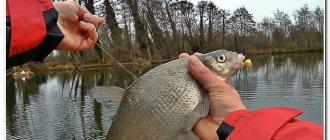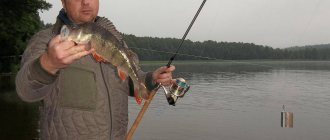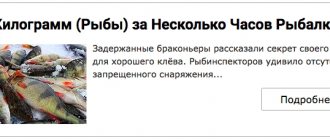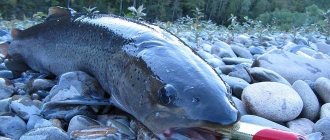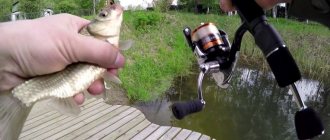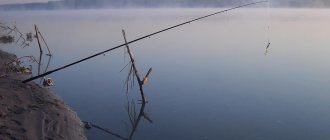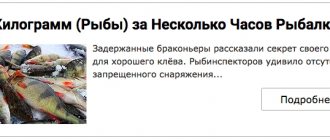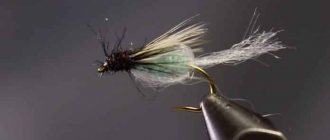The name of the river is deciphered quite simply. Donets - because it is a tributary of the Don, Seversky - because the source was in the ancient Seversk principality. Most of the way the river flows through the territory of Ukraine, but the upper and lower reaches are located in two Russian regions: the source is in Belgorod, and the mouth is in Rostov.
Long haul
The Seversky Donets is almost equal in length to the Rhine, but in terms of basin area it is half as large. Despite this, almost 2.5 thousand rivers flow into it. The length of most of them does not exceed 10 km, but 11 of the tributaries are more than 100 km long.
The river is 2/3 fed by snow and 1/3 by spring, so the water level and flow speed fluctuate significantly from season to season. However, in general, the Seversky Donets has a rather calm character, and in the Russian part it is regulated by a system of dams and locks. Kayak routes along the river are assigned the lowest category of difficulty. The Seversky Donets is covered with ice in the second half of December. The thickness of the cover is not too great: it ranges from 20 to 50 cm. So winter fishing on the Donets is possible in principle, but caution must be exercised. The ice is very unstable; during prolonged thaws, the river may even temporarily open up. The flood lasts from the end of February to the beginning of April and is accompanied by a rise in water by 2-4 m.
The channel of the Seversky Donets is extremely winding and rich in floodplain lakes and oxbow lakes. In addition, stone was previously mined near the river. Now the abandoned quarries have filled with water and turned into small lakes.
Read: Sea fishing in Sochi and Abkhazia
Relief shores
The Seversky Donets is rightfully considered one of the most picturesque rivers of the East European Plain. Its popularity among tourists is evidenced by the great variety of walking, cycling and kayaking routes along the river and its banks. However, for a comfortable trip it is best to choose an SUV: the Don steppes are quite hilly. The banks of the river are as different as day and night. The left one is gentle, with water meadows, lakes, oxbow lakes and swamps. The right one is steep and rocky, overgrown with forests and bushes. In the area of the city of Kamensk-Shakhtinsky you can see low but beautiful mountains - spurs of the Donetsk Ridge.
These places are almost ideal for “wild” outdoor recreation with the whole family. The surrounding forests are rich in game and berries, and the river waters are rich in fish. The picture is completed by apricot trees, springs flowing here and there and cozy sandy beaches. The tourist season lasts from approximately May to September, but the best time to go to Seversky Donets is in July. At this time, the water in the river is warmest and suitable for swimming.
River for a spinner
The channel of the Seversky Donets is extremely diverse: shallow waters give way to deep waters, there are a lot of snags, there are both straight sections and turns with bays. This is why the river is so rich in fish: there is a suitable area for a wide variety of underwater inhabitants. Here you can catch bream, perch, rudd, chub, asp and even catfish. One of the most popular fishing objects is pike. A trophy specimen can easily reach 1 m in length and 8-9 kg in weight.
Read: 12 best places for fishing in the Kemerovo region
According to experts, Seversky Donets is ideal for spinning fishing. It is best to use fairly short and light fishing rods, no more than 2 m long, equipped with a powerful reel and thin thread.
Overseas glutton
Sunny perch in Russian waters is very exotic. Fishermen who caught it often mistook it for a piranha due to its mouth full of sharp teeth. It is not surprising that no special techniques for catching it have yet been invented. According to some fishermen, they are not needed: sunfish have an excellent appetite and willingly rushes to any bait. Many even consider it a trash fish, driving away valuable species from the fishing spot.
If you nevertheless decide to fish for sunfish on the Seversky Donets, you need to keep the following in mind. Firstly, this is a coastal fish and therefore it is easier to find it close to the shore. It is rare to find a sun perch at a depth of more than 1.5-2 m. Secondly, it is quite thermophilic and even in hot sunny weather prefers to stay in the upper layers of water. Thirdly, sun perch move in schools, as if patrolling along a cut of grass or a coastal edge. Sometimes it happens that such a flock occupies an area under trees or bushes hanging over the water and does not leave it. If you come across such a perch patrol, you can be sure of a rich catch.
Read: Fishing on the Maya River
Seversky Donets River - description and fish sites
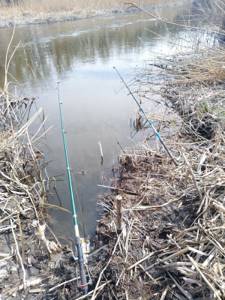
Over many years of fishing practice, I was able to visit many interesting sections of the river. As a rule, the Donets is a narrow body of water with depths from one to eight meters. Numerous bays are inhabited by peaceful species of fish, which are caught by local fishermen with varying success. There is also pike there, the size of which rarely exceeds two kilograms. To hunt for a trophy predator, you need to devote a lot of time to the river. Ordinary fishing with a spinning rod often brings a lot of small-toothed ichthyofauna.
In my opinion, one of the most interesting fishing trips on the Seversky Donets is spring chub fishing with donka . In recent years, there has been significantly less fish in the river, but chub, due to its capricious nature, is still abundant.
The red-finned predator lives in narrow places with strong currents, which are popularly called “pipes.” This year I managed to find one promising point with a rather interesting topography. The channel in this place passes under the near bank, and under the opposite side there is a sandbank. With the help of heavy bottom equipment, I was able to catch a good ide from the shallows, and persuade a large chub on the riverbed. The key aspect of having a handsome redfin is that the area is impassable and there is no pressure from anglers. Of course, there are concentrations of chub near large bridges, crossings and other structures, but they completely refuse to peck there.
Interesting fishing spots

1. Sharp turns of the river . In such areas, a strong current eventually washes out a deep hole where large bream, chub and catfish like to stand. I devote many May fishing trips to hunting for the mustachioed giant, using a heavy jig and fishing with live bait. A frog is often used as bait; it brings more bites.
2. Bays with a depth of up to 1.5 meters . Hard-to-reach sections of the river offer excellent fishing. Shallow bays, untouched by poachers, become excellent places for tench fishing. You have to get there by boat, actually spending the entire fishing day in it. If you manage to catch a small roach along the way, then it can be used as live bait, waiting for a bite from the local pike. I catch tench throughout the summer using a classic lapdog. The peak of activity occurs at dawn, so you have to get ready by 11 o'clock in the afternoon.
3. Shore overgrown with bushes and trees . Starting from mid-spring, such sections of the river attract fish that feed from the surface of the water. Insects that constantly fall from tree branches become natural bait for chub, ide and rudd. Here small fetas like L-minnow are used, which are convenient to control in the current. Equipment with a bombard also brings decent results. Usually I lower the sbirulino downstream, gradually catching each fallen tree. The bait is a cockchafer, a worm, a maggot and a dragonfly.
4. Entrances and exits from pits . If fishing for whitefish is planned, then first of all I go to a small hole with a moderate current. Within the city limits, fishing spots are often occupied by anglers with feeders, so I prefer to drive along the river for several kilometers until I find myself completely alone.
5. Rapids in shallow waters . Over many years of practice, it was possible to discover promising expansions of a river with a strong current. Logically, there should be little fish in such areas, but already the first attempts to fish with a spinning rod proved the opposite. Small wobblers and spinners caught asps weighing up to a kilogram. It was possible to find a truly trophy specimen only at the end of summer, when the heat began to gradually subside.
The Seversky Donets is so diverse that an area of several kilometers can accommodate a variety of fishing conditions with different species composition of freshwater inhabitants.
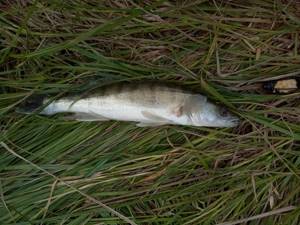
Popular sites on the river
It is extremely difficult to examine the river along its entire length. In this material, a section of the river will be subjected to a certain analysis, starting from the mouth of the Oskol River (which flows into the Seversky Donets) and to the section of the river, next to the village of Piskunovka, Slavyansky District.
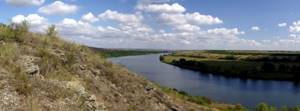
This section of the river is also not the same. And it makes sense to break it down into shorter segments in order to understand where, what to catch, and what kind of fish it makes sense to target on this or that segment of the river bed. Starting from the village of Piskunovka and up to the Zhabunivskaya dam, an angler fishing on a feeder can count on catching: crucian carp, silver bream, roach, chub, carp.
Although the latter is very rare and is caught only locally, directly next to the Zhabunivskaya dam. In addition, small catfish are also caught in these places, although you don’t have to use a feeder to catch them; traditional bottom gear is quite enough. For some reason, in this area, bream is found very rarely.
But, much more often, large crucian carp are caught. Perhaps this is due to the fact that the crucian carp entered the river from a tributary of the Donets - Kazenny Torets, which, in turn, is connected to some reservoirs of the Don Fishing Plant.
It is in this section of the river that it makes sense to start feeder fishing in early spring. This is due to the fact that the water in this section always has a temperature slightly higher than throughout the rest of the river. The Nikolaev power plant is located nearby, and warm water flows into the river. But what’s paradoxical is that crucian carp are caught well on the feeder, not in calm sections of the river, but almost next to the dam. And chub are also caught on the feeder there. Even lower from the dam there are areas with fairly large depths. And, it would seem that there should be bream there, however, there is apparently a minimal amount of it there and in the catches of feeders, crucian carp, roach, and silver bream continue to dominate.
The next good section of the Donets for fishing with a feeder is the confluence of the Kazenny Torets with the Seversky Donets. Here, various fish are caught on the feeder, but for some reason there are no large bream there. And again, this place is more popular with spinners than with feeders. And the fishing pressure is quite large. Interestingly, up to the Raigorodskaya dam itself, large bream are practically not observed either. Although, all other fish, including crucian carp, are there.
White bream, silver bream, roach are starting to be caught on the feeder, starting from the railway bridge, across the Donets. And it must be said that the river here is quite wide, and the current is not very fast. Upstream, the entire left bank is in tourist centers. In principle, you can fish with a feeder, but a huge number of vacationers allow this to be done only early in the morning or, best of all, at night. Normal bream places start higher from the Shchurovsky camp sites.
Here the chances of catching a large fish on the feeder become more significant. But a huge number of motor boats and jet skis make it possible to fish with a feeder for a couple of hours in the morning and at night. The situation in the area of the village of Sidorovo is somewhat calmer, but far from ideal. There are significantly fewer motor boats. And you can already fish with a feeder, more or less calmly. Interestingly, in these places bream used to stay in pits and come out of them to feed.
For unknown reasons, many holes that were favorite sites for schools of bream are now empty, as confirmed by echo sounder readings. The same picture is observed in the village of Prishib. It is easier to catch bream on a feeder, in relatively flat areas, than in deep holes or at the exits from them.
And this trend goes all the way to the village of Tatyanovka. The most promising places for feeder fishing on the Seversky Donets begin from the village of Bogorodichnoye and upstream. Bream weighing from 1 kg and much more are no longer uncommon here. But it must be said that there are no huge schools of this fish here either. But there is a chance to catch not only a trophy bream, but also a fairly large chub on the feeder. Moreover, catching a large chub is not exotic at all, but a completely ordinary event. And roach and silver bream are everywhere.
Popular fishing methods on the Seversky Donets
Before each individual fishing trip, you have to re-adjust the gear, taking into account all the features of the chosen fishing spot. A river is an unstable body of water, in which the water level often changes, strengthening or weakening the flow.
Float rod
For river fishing I use rods up to six meters. On the stream, they fish with the wire in one fell swoop, equipping the delicate equipment with a miniature sports-type float. In the spring you can hunt for schooling roach in this way, and in the summer for chub and rudd. As a rule, I don’t use bait, since fishing is popular. No more than 10 minutes are allotted for one place.
It is best to take bloodworms as a bait, but in the warm season it is not possible to find them on store shelves, so the second best bait is considered to be a worm. The red worm has a specific smell that fish like so much. I rarely use maggots; it attracts the larger inhabitants of a reservoir less well, but attracts small things in the form of bleak.
Many anglers use a fishing swing with a side nod . This type of fishing is popular throughout the year. The baits are miniature devils and other mothless insects.
The Bologna rod is used for stationary fishing . The equipment is not much different from fishing in reservoirs without a current. Anglers use horizontal floats that are placed directly under the rod's whip. The current carries the hook with the bait down, and the bite is transmitted as a slight rattling of the alarm on the water surface.
Donka and feeder
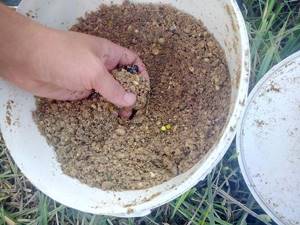
Bottom tackle is an excellent solution for catching carp fish in the current. Thanks to the lead sinker installed above the feeder, the carp rig is held in the working area.
In strong currents, running or stationary bottom tackle is preferable. I use it in early spring for chub fishing, and also in late autumn when hunting for burbot. Donka also performs well when fishing for small catfish, the bait for which is a bunch of crawlers.
With the help of a feeder on the Seversky Donets River you can catch anything . The beauty of wild water fishing is the constant surprises, because you never know who will be hooked. The wide species composition of freshwater inhabitants sometimes brings surprising surprises. I remember one fishing trip that took place on a warm summer evening. With the help of a feeder, I managed to catch a dozen medium-sized silver bream, after which a seasoned pike perch sat on the hook. With the help of a hook and a strong rig, I won that day, but there were times when a large predator bit off the leader. It is not known why pike and pike perch sometimes attack a feeder lying on the bottom, but the fact remains a fact. There are three bites per season.
During the current, I use a feeder rod with a test weight of 70-150 grams, which successfully copes with fast water flow and depths of up to five meters.
The most popular fishing montages:
- paternoster;
- Gardner loop;
- symmetrical loop;
- helicopter.
In recent years, on the advice of a friend, in each of the rigs I have been using feedergam, a special rubber that absorbs the jerks of the fish. In this way, it is possible to reduce the load on the thin leash, since the feeder forgives minor mistakes when fishing for prey.
Spinning
The Seversky Donets River is rich in predators . Carnivorous fish species include pike, pike perch, perch, catfish, burbot, asp, ide and chub. Equipped with a light rod with a weight of up to 8 grams, you can hunt for large perch, which is active in April.
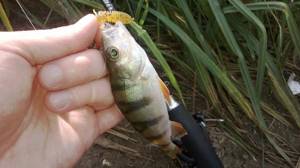
Pike also often indulge in their bites, especially when using twitching wobblers. The size of the fish depends on the distance of the fishing site from populated areas. Within the city limits, as a rule, you come across small specimens, but as soon as you drive 10 kilometers downstream, the emergence of a worthy predator immediately begins.
If there are no problems with perch and pike, then you have to look for pike perch and asp. Promising points do not always give a confident result, and the fish often ends up in an unusual place.
Catfish fishing with a spinning rod on the Donets is sporadic. The mustachioed giant bites on spoons in May and appears throughout the summer. You need to catch it at dawn, as soon as it begins to get dark. Sometimes I managed to get a good bite in September, but I used a boat with a quok.
Visiting the Seversky Donets, I realized that the river carries a special mystery. The species diversity of freshwater waters cannot leave the experienced fisherman indifferent. The changeable terrain and variety of sections of the river make it possible to quickly switch between different types of fishing. Seversky Donets is not just a river, but a unique body of water with its own character.
Autumn on the Seversky Donets: in search of active fish
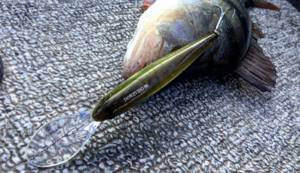
It so happened that this fall I had the opportunity to fish on the Seversky Donets more than once. The next trip was planned to the village of Ust-Bystryanskaya according to the “Visiting the matchmaker” scheme. But the day before, already late in the evening, the phone rang: my friend Yuri and his brother were also going fishing in those parts, so we decided to team up and chose a section of the river below Ust-Bystryanka, between Zhuravskaya and the Bronitsky bridge.
My companions are hunters and fishermen to the core, but for the most part they catch non-predatory fish with fly rods, feeders and float rods, and if they dabble in spinning, it is with “iron”, cranks and lead equipment. Jig and twitching somehow fell out of their practice, they were known only in theory, and now they decided to fill this gap.
We dropped the “Volzhanka Legend Fish 46” at dawn near the Bronitsky farm. Having taken on board two “brothers from the chest” with a total weight of 240 kilograms, the boat sank greatly, and the first attempts to get it on the glider were unsuccessful. After playing with the “ballast”, I still coped with this task. It must be said that the “Volzhanka Legend Fish 46” was created for sport fishing on the basis of the Fish 46, the high deck and frame made the boat a little heavier, but when fully loaded (two large men, two lockers filled with baits, and one hundred liters of water in the lavel) Legend Fish 46 with a 60-horsepower engine is quite agile and travels at a speed of 54-57 km/h.

Initially, Fish-type decks were used on bass boats, but now high decks are used in the construction of fishing boats by our shipbuilding enterprises, including. Several years ago, on the basis of the Volzhanka hull, several experimental Legend Fish 49 - 52 boats were built for sports fishermen, and soon the production of Fish boats for ordinary fishermen was launched. In 2021, the company decided to produce fishing boats with a length of 4.6 meters and, “in addition”, assembled three boats for the athletes in the Legend Fish configuration, for use in extreme conditions, one of which went to the Topolov-Madyukin crew. But this is a separate topic for discussion.
The main purpose of my trip to the Seversky Donets was pike, and in the morning we looked for it where it lived until mid-autumn. There are not particularly many pike in this section of the river, but there are places where its concentration is higher. Having fished shallow water with adjacent channel dumps, we did not see a single pike bite, but the Jackall Magallon wobbler was repeatedly attacked by perch. The striped fish was quite active and grabbed the wobbler on light classic twitching during short pauses after a series of jerks in one second.

Daylight hours in late autumn are short and there is little time for fishing. In order not to waste time, I sent the boat upstream. Not far from the mouth of the Kundryuchya River there is a hole where toothy fish caught well last fall at about this time. We walked this hole length and breadth; in one of the places the structural designer drew a large school of white fish clinging to a vertical slope, but there was no active predator nearby. In late autumn, the water in the Seversky Donets becomes crystal clear, and the fish become cautious, and pike perch hunts only in the dark, and pike hunts until noon and in the evening, but its outings are short-lived. Therefore, one cannot discount those places that at first glance seem dead. We decided to move on for now and return here by the end of the day.
Having risen to the Avilov farm, we began to fish for the coastal dump, setting up the boat at depth and casting it to the shore. For 400 meters, the river here is a vast plateau with a constant depth of 3.5 meters and a diffuse current; where we fished, the dump runs close to the shore, and is snagged in places - the predator likes it. My companions mastered the basics of jig with varying degrees of success. Yuri was very worried that we were moving around a lot; he was used to feeding the fish and waiting for it to come. I tried to explain to him that catching a predator is a dynamic process, a search, especially when the predator is dispersed and there are no obvious concentrations of it. The perch bit, but in one place they managed to provoke the asp to attack.
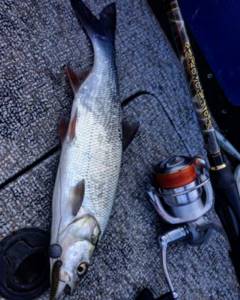
Meanwhile, I was tugging on a Jackall Dowzvido 90SP suspender that the bass couldn't resist. I drove Dowzvido in light jerks, mostly 2-2, but sometimes I improvised and performed additional jerks of varying strengths. The guys were surprised how the bait, which they thought could only be used for trolling, caught fish while casting.

Somewhere in the afternoon, the fish stopped being interested in Dowzvido, and I, putting the Spiker SPS-702M twitch rod aside, took instead the Provokator NEW PRNS 792L jig spinning rod, which is well suited for jig fishing for perch, pike perch and pike on a small river with a calm current . It turned out that the perch was in place and was actively biting on a light jig. This happens when factors such as atmospheric pressure and bright sun affect the fish. The perch stops rising to the middle layers for bait, but continues to feed in the bottom layer. On the very first steps, the striped fish grabbed the Jackall Scissor Comb 2.5″ soft bait, reminiscent of a multi-legged insect. The bites were confident and felt like a clear blow.
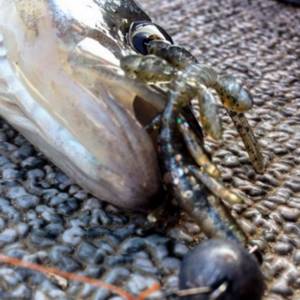
In the same place we managed to catch a couple of pike perch, but the nearby snag did not bring anything. The village of Zhuravskaya was very close, and we went up to the waterworks. Near the dam, the water is rich in oxygen, and this gave us hope for a good bite. I had previously fished near such structures, and it was not difficult to understand the features of the place. On both sides of the turbulent stream there are return streams that come close to the dam, and the fish are kept at the boundary of the stream and the return stream, as well as at the head of the return stream close to the hydraulic structure. On the very first “sighting” runs, the pike perch fiercely attacked the Noike Ninja 3″, the bite was like a shot. In general, the fish near the dams are strong and take decisively.
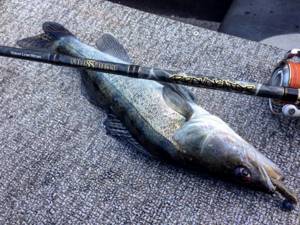
There are usually a lot of pike perch in such places, but only one was on duty; Apparently, we appeared here at the wrong time, during the afternoon “quiet hour”. Staying until the evening dawn meant walking along the river in pitch darkness for about 15 kilometers. After staying for about forty minutes, we found a good perch.

Meanwhile, the jigging skills of my companions were growing. Yuri kept dreaming of feeling a powerful pike perch bite, but the fish ignored him. Going down to the places where we started today’s route, we decided to check out the “Tsar’s Pit” along the way. At the entrance to the pit, the scanner showed a school of white fish, and we couldn’t help but try our luck, but the “shepherds,” if they were there, didn’t respond. Having fished pike places and not having achieved a single contact with fish, we went down to a place that the locals call “Pryalachka”. Here the fairway comes close to the shore, has a depth of 5–6 meters and is studded with shaggy snags.
The day was coming to an end, a perch was biting on the dump, and then a pike perch took it on another snag. Yuri kept changing baits, trying to find a better option. Taking out a pack of silicone, he said:
- Here's Noike!
I tried to explain to him that this was the name of the manufacturer and that this particular lure was called Ninja. But he, thinking it was a joke, said again:
- Noike!
Taking one bait from him (I was running out of them), I told him that Ninja began to be sold in Russia at the beginning of 2021 and at the beginning of the open water season they appeared in my place. Using this bait on various bodies of water, I caught pike perch, perch and perch. It's hard to surprise me with silicone, but Ninja became a real discovery of the year for me. Smack! — and the Noike Ninja 3″ fit on the Vanfook 4/0 offset hook. By the way, the hooks of this brand are also worthy of attention, they are sharp and strong - real Japanese quality. Having launched the bait under the next snag, I immediately got the result - the fish attacked it with lightning speed.
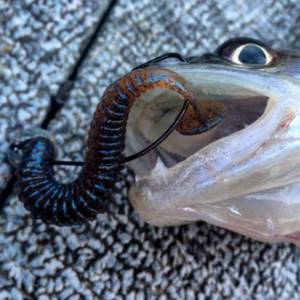
At sunset, the pike perch was biting very actively, but only in the very snags, when dragging the bait through the rubble. If the bait passed close to the shelter, then the fish did not react to it. Of course, at night the pike perch would come out to hunt in clear water, but my companions were in a hurry to get home. In the evening, Ninja were attacked by fish of different sizes, among which were a couple of weighty specimens, which I could not pull out. In snags you should fish as short as possible, but my pike perch were caught at a medium distance.
The fanged ones continued to take until the tips of the spinning rods were visible, after which the bite died down.
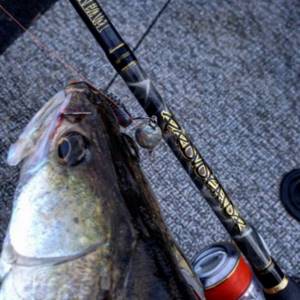
The guys also managed to catch several pike perch.
Yuri finally got the hang of it, and when he caught the first jig pike perch, his joy knew no bounds. Share
Fishing Features
The Seversky Donets River is located in densely populated regions of Russia and Ukraine. There is quite a lot of fishing and poaching pressure here. Industrial and agricultural pollution has a strong impact on fish populations. A significant part of the river is small in size, including its depth. This does not allow large fish populations to recover quickly, and trophy specimens are found less and less often. Nevertheless, fishing on the Seversky Donets is very exciting and interesting. Fishing for “peaceful fish” is the most popular among local residents. For this purpose, various fishing methods are used. Feeder fishing is becoming increasingly popular. With this method you can catch decent carp, crucian carp, silver bream and other species. For lovers of fishing for predators, the most interesting object of fishing is pike. In addition, in some areas you can observe “asp fighting”. You can fish both from the shore and from a boat, which can be more successful, especially when the coastal vegetation comes close to the water. Experienced fishermen argue that it is better to visit the Seversky Donets not in “random raids”, but over the course of several days. This will allow you to count on catching real catches. This applies to all types of fishing. A positive point for fishermen is the accessibility of the river in terms of the transport network and approaches to the shore. In addition, the developed infrastructure allows you to organize a comfortable stay for every taste and budget. Fishermen can find comfortable camp sites, cozy guest houses, etc. here. Fishing in densely populated areas has its own specifics. The most reasonable solution would be to use the services of local recreation and fishing organizers. This will allow you to avoid many inconveniences, especially since you can relax here with your family, on a big campaign, etc. For history buffs, the large number of historical sites and cultural monuments can serve as an important element.
